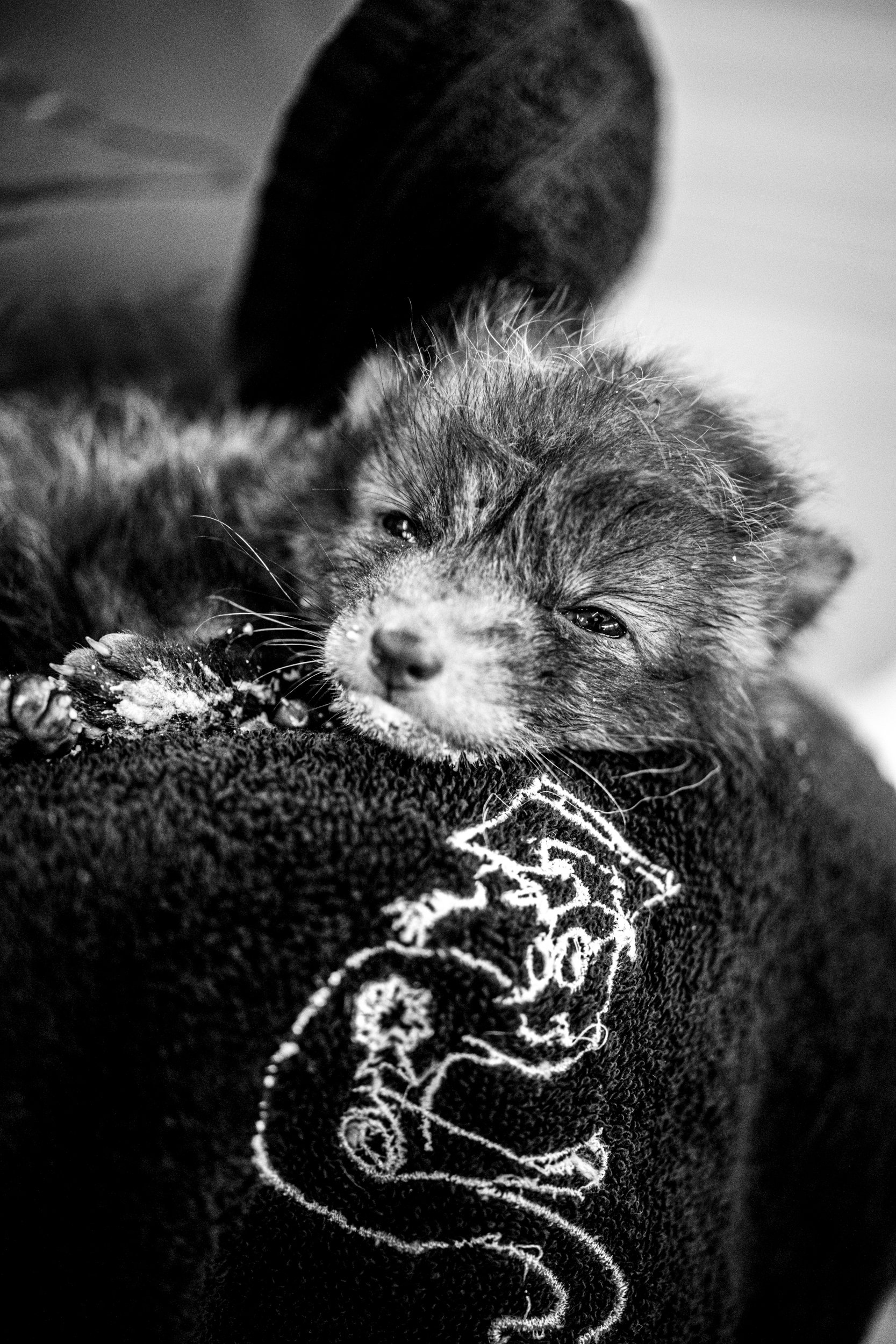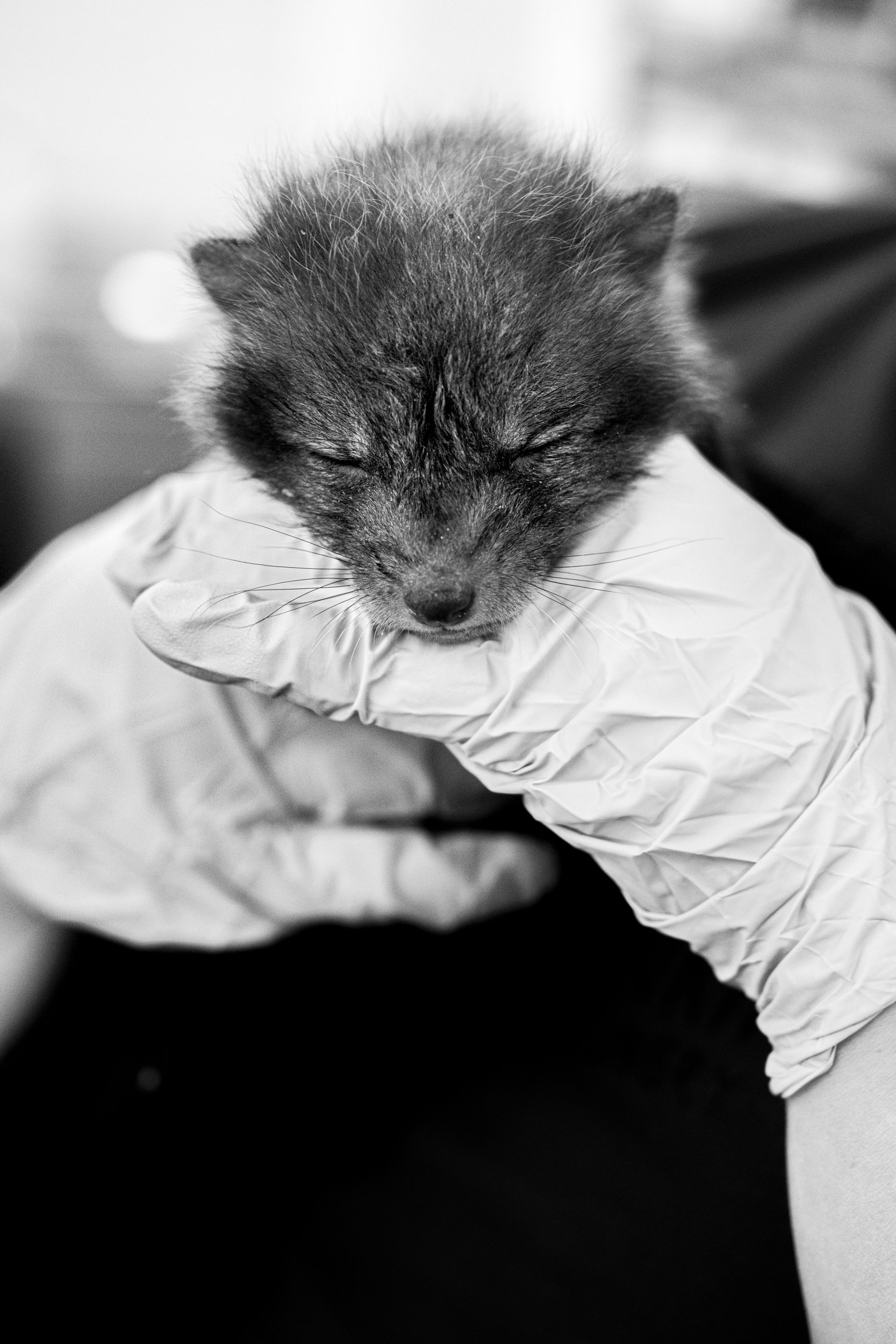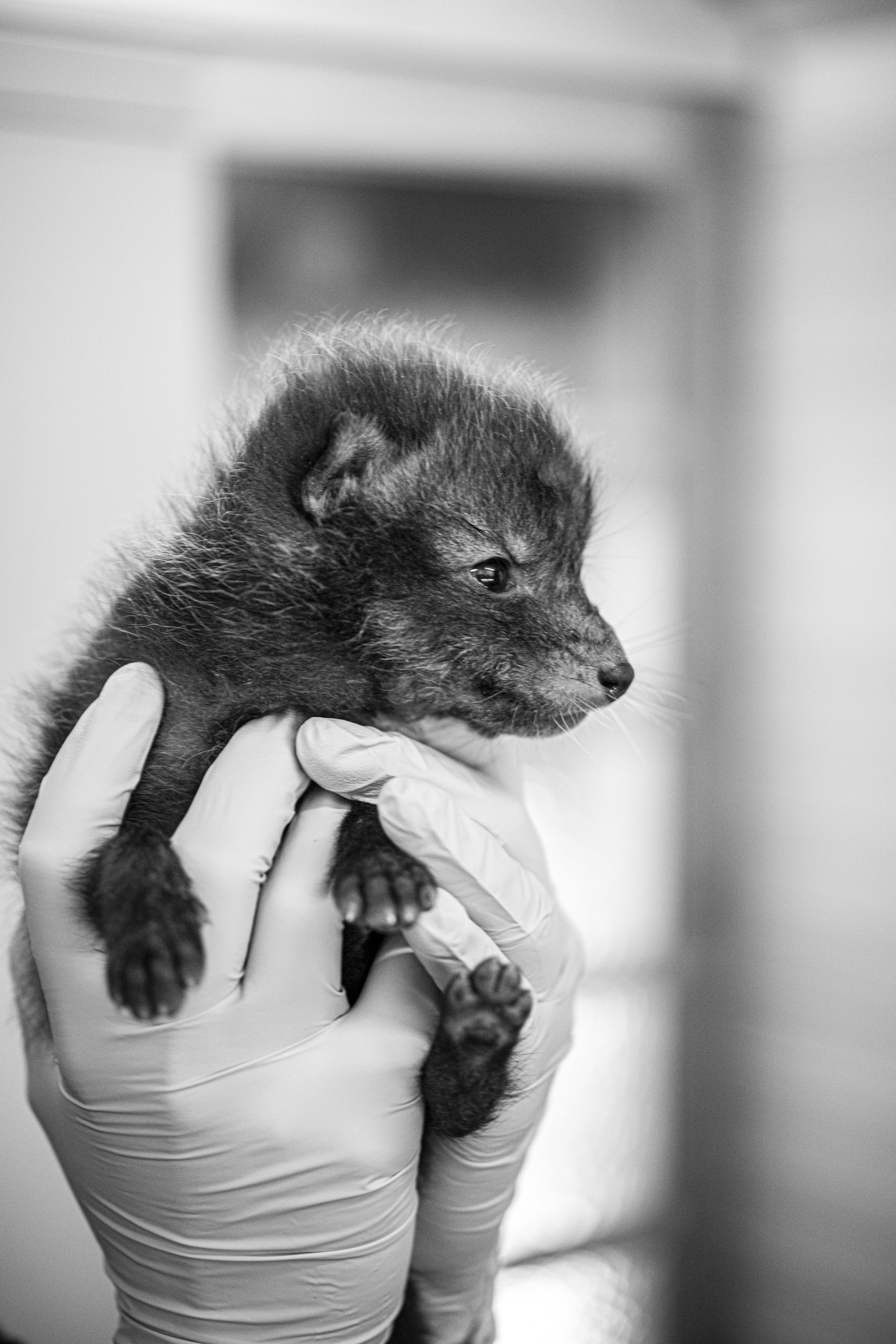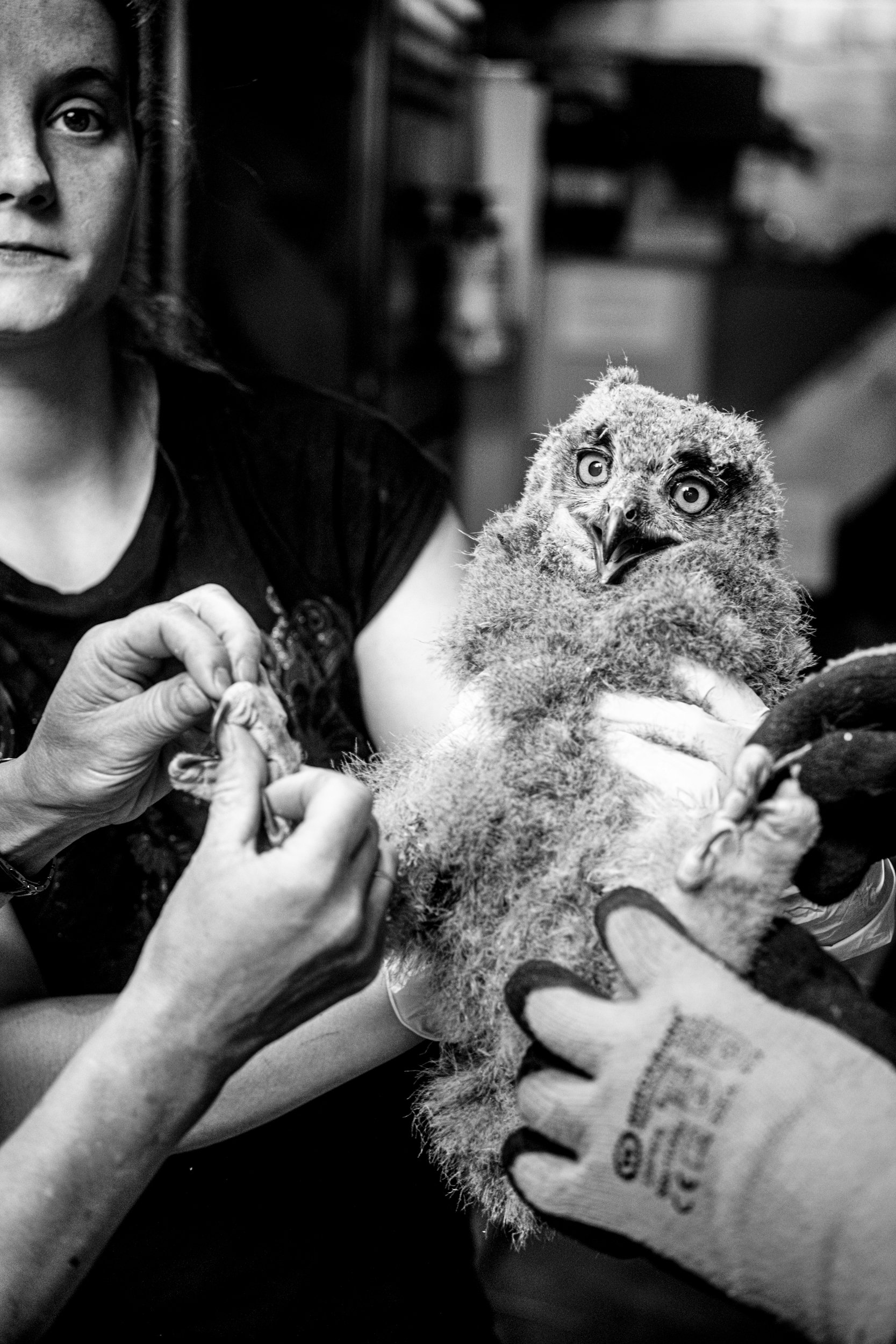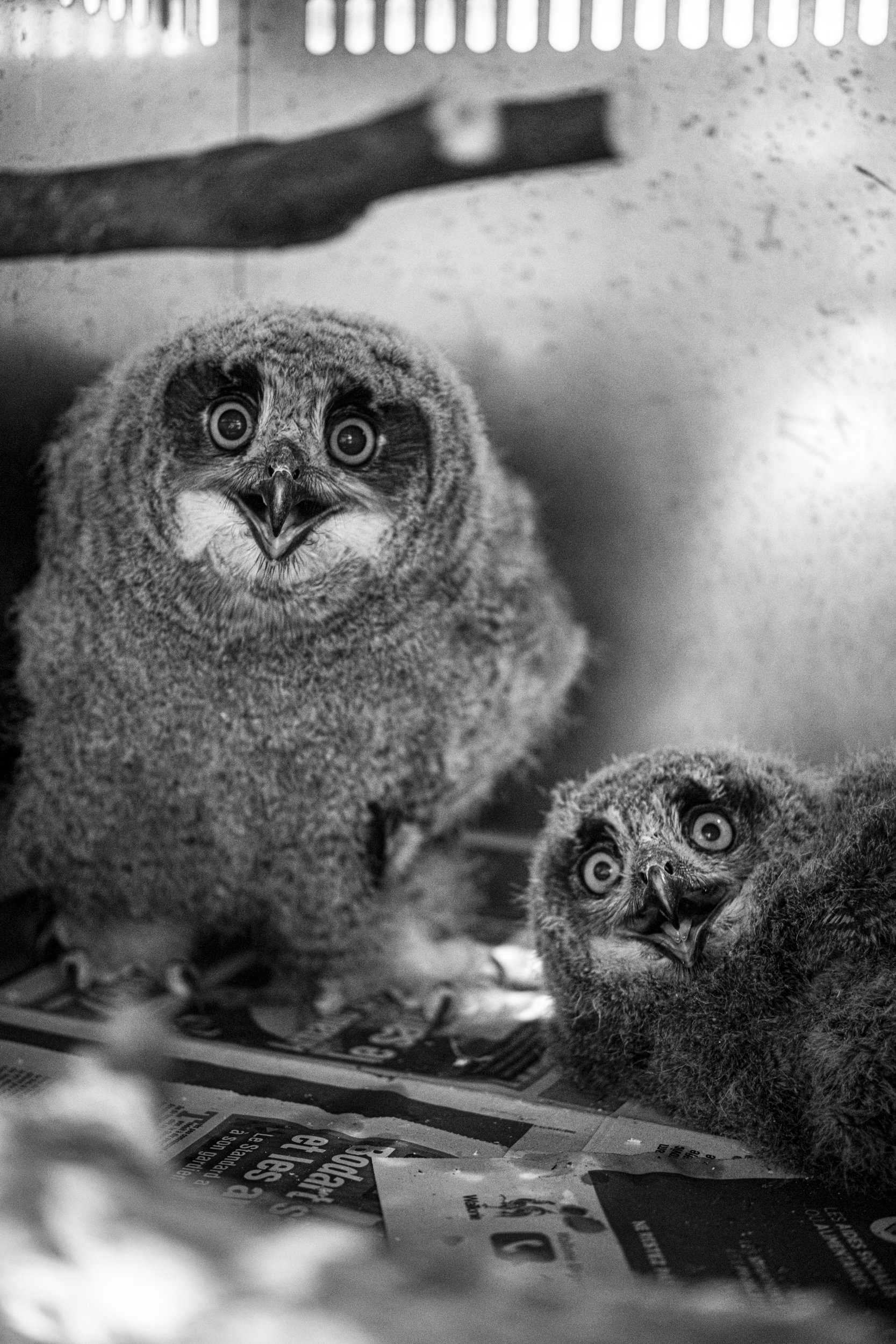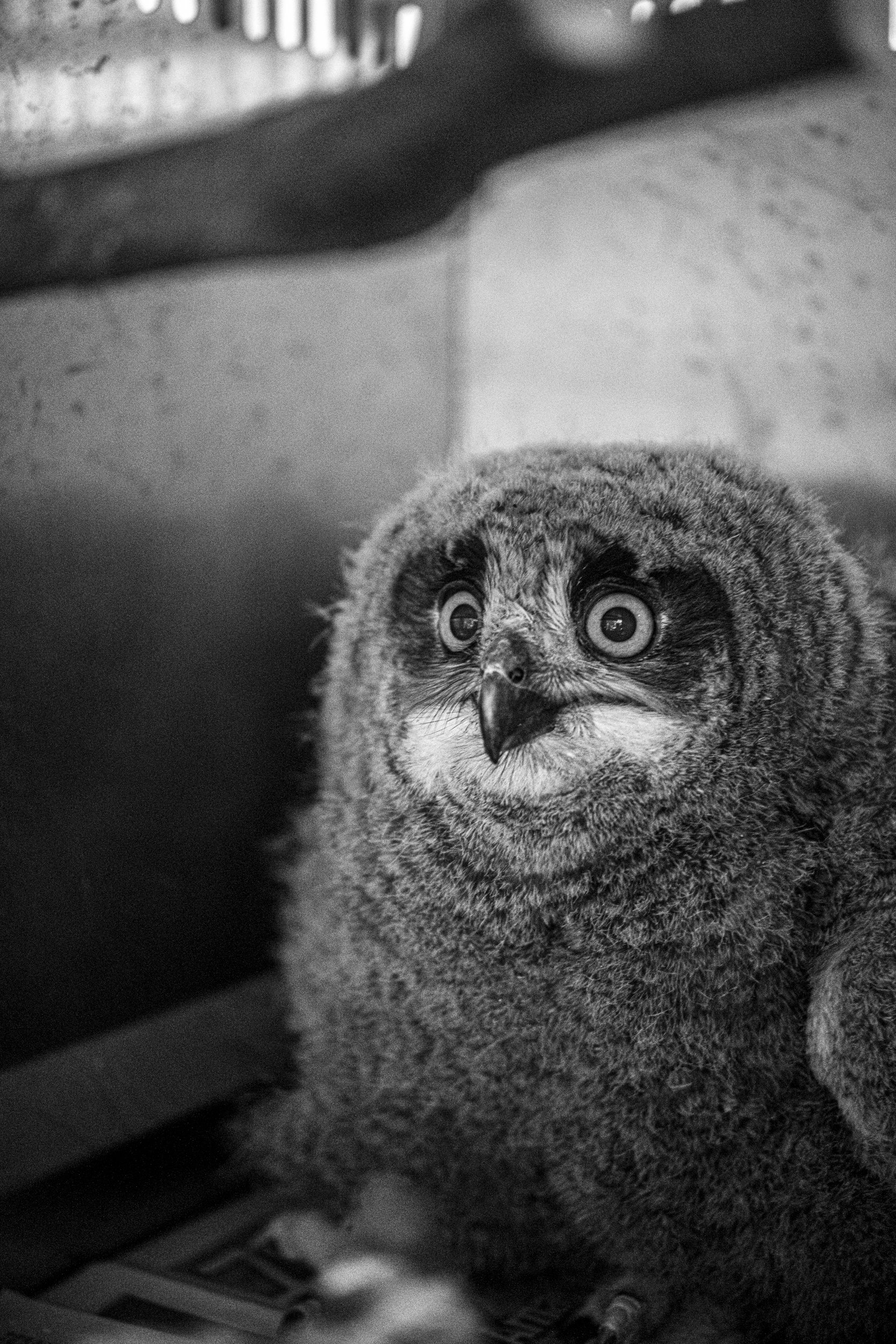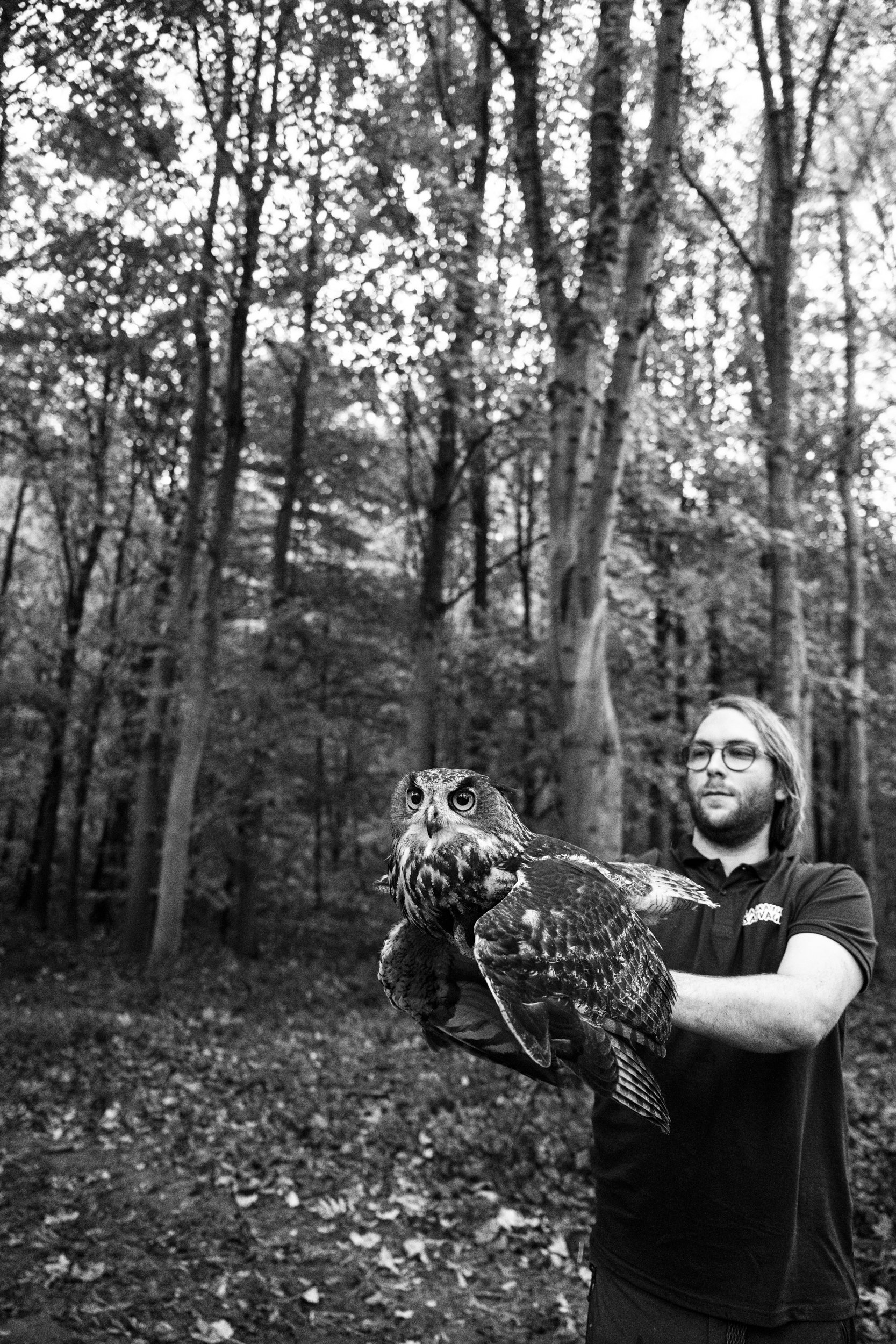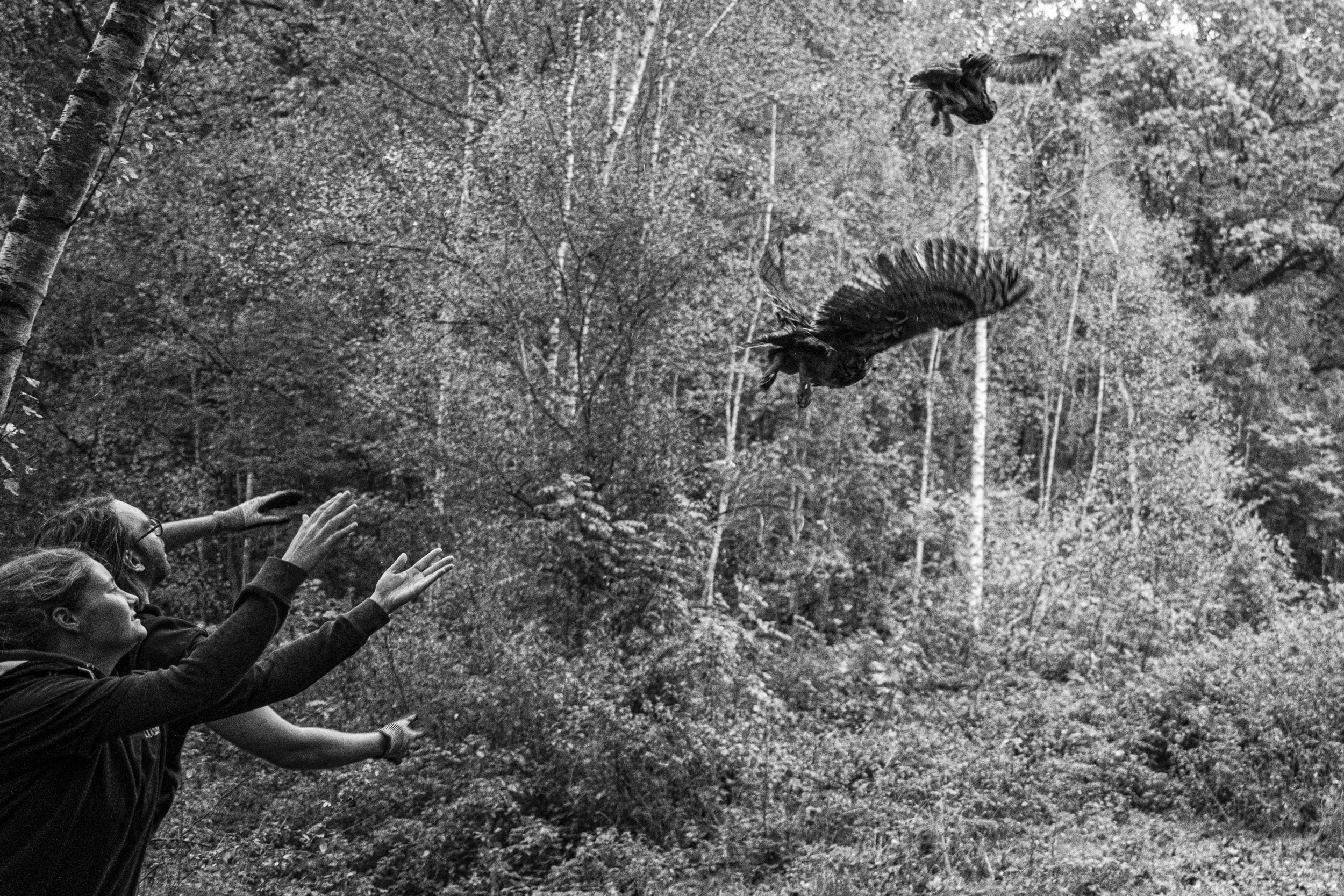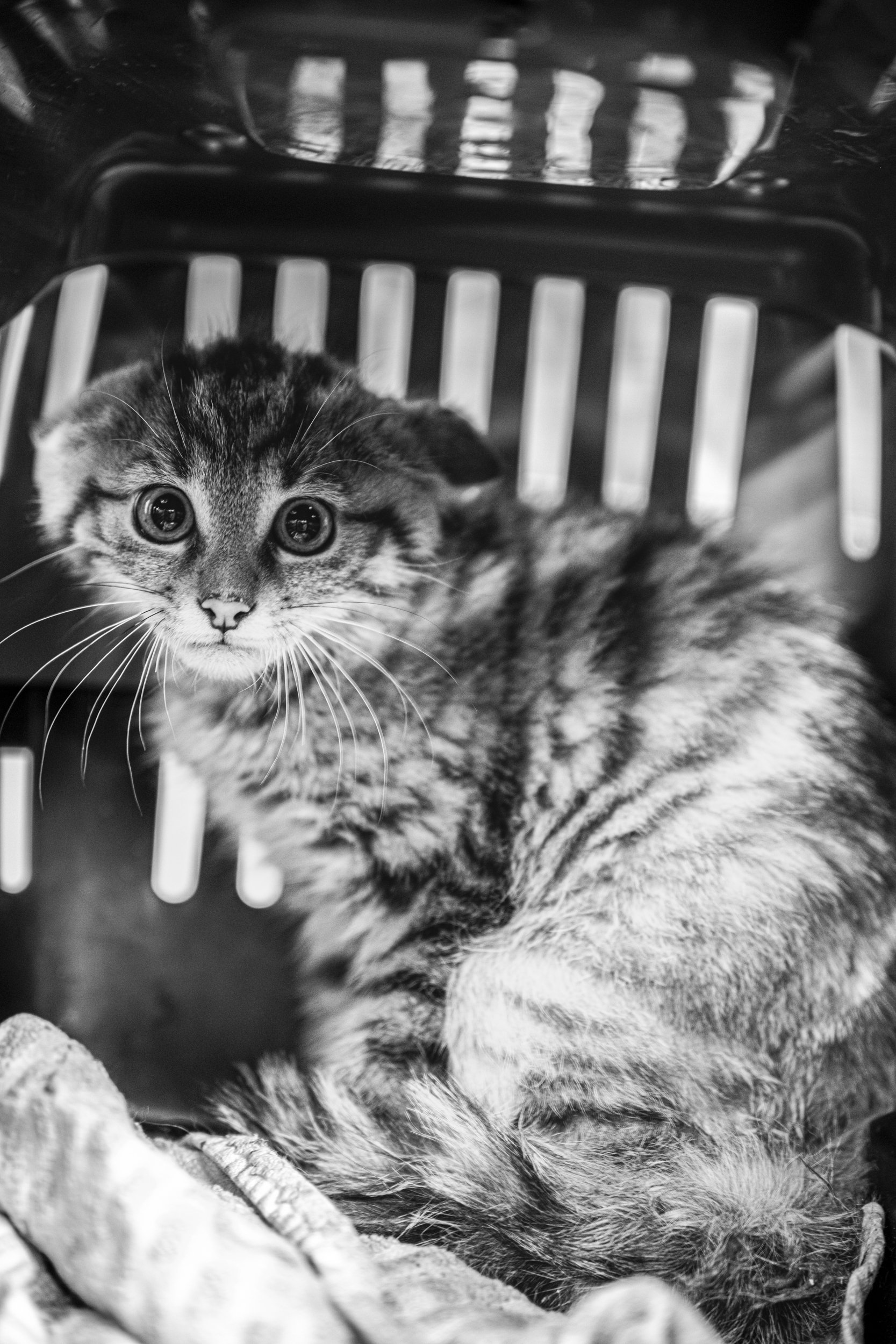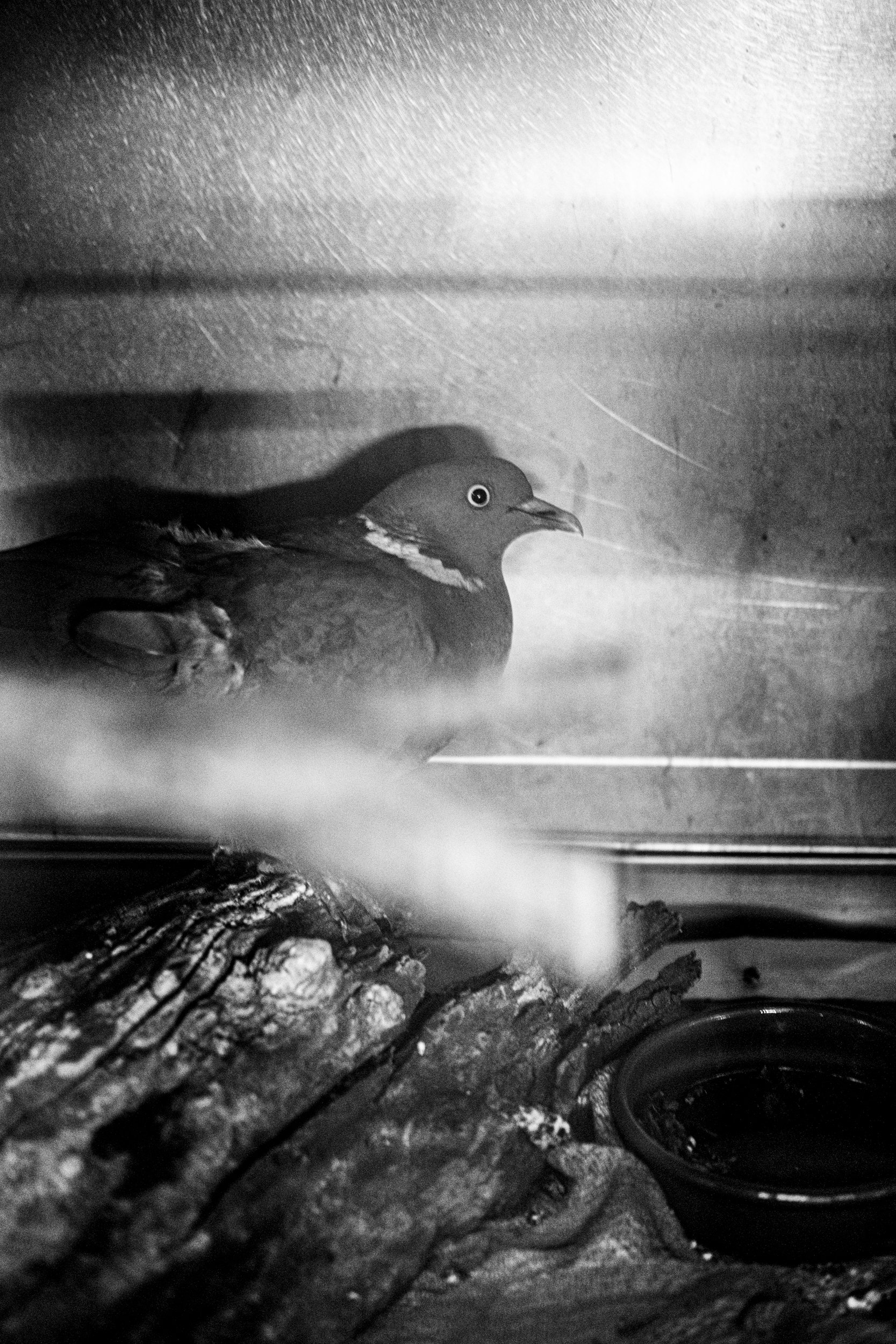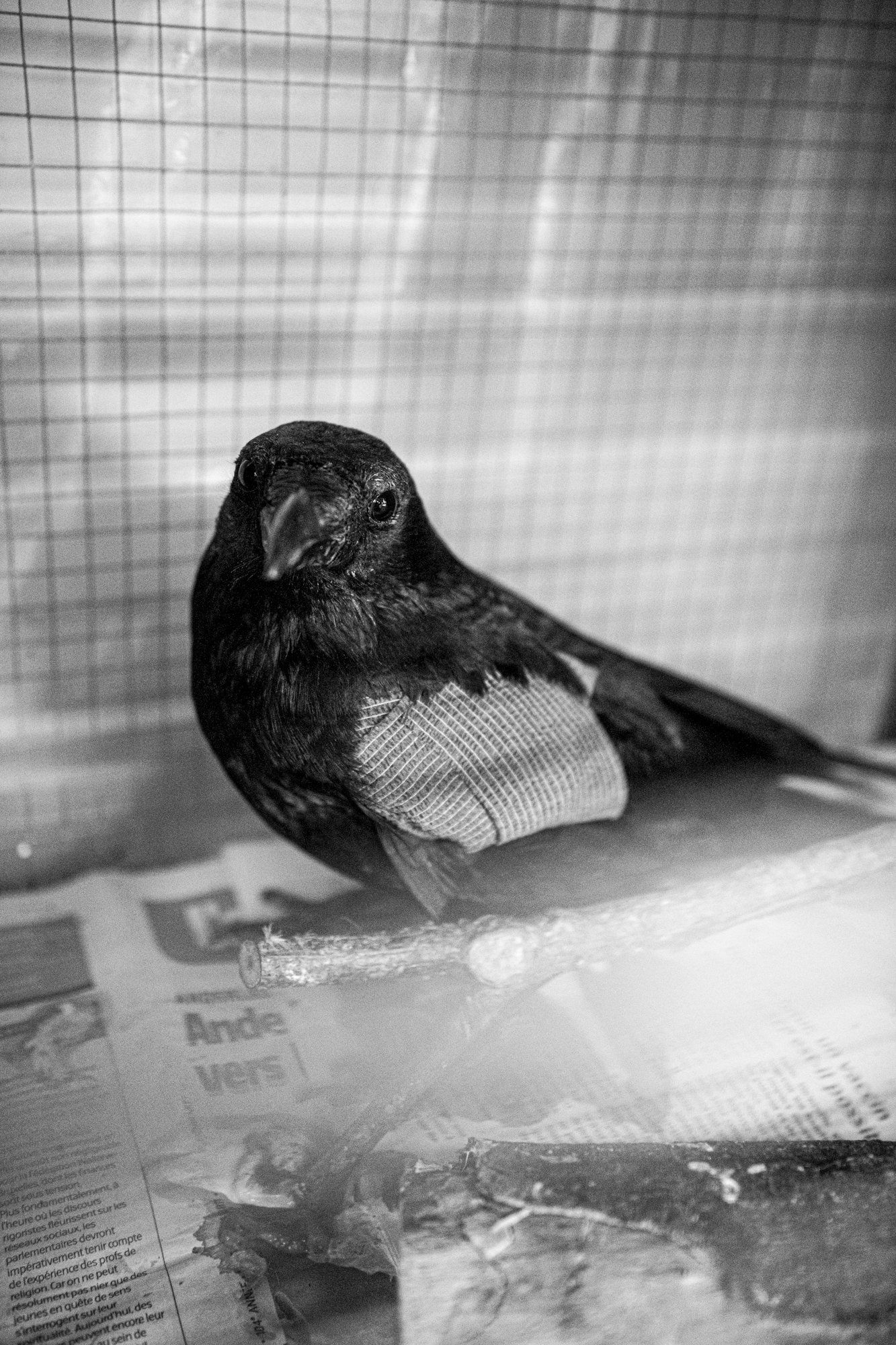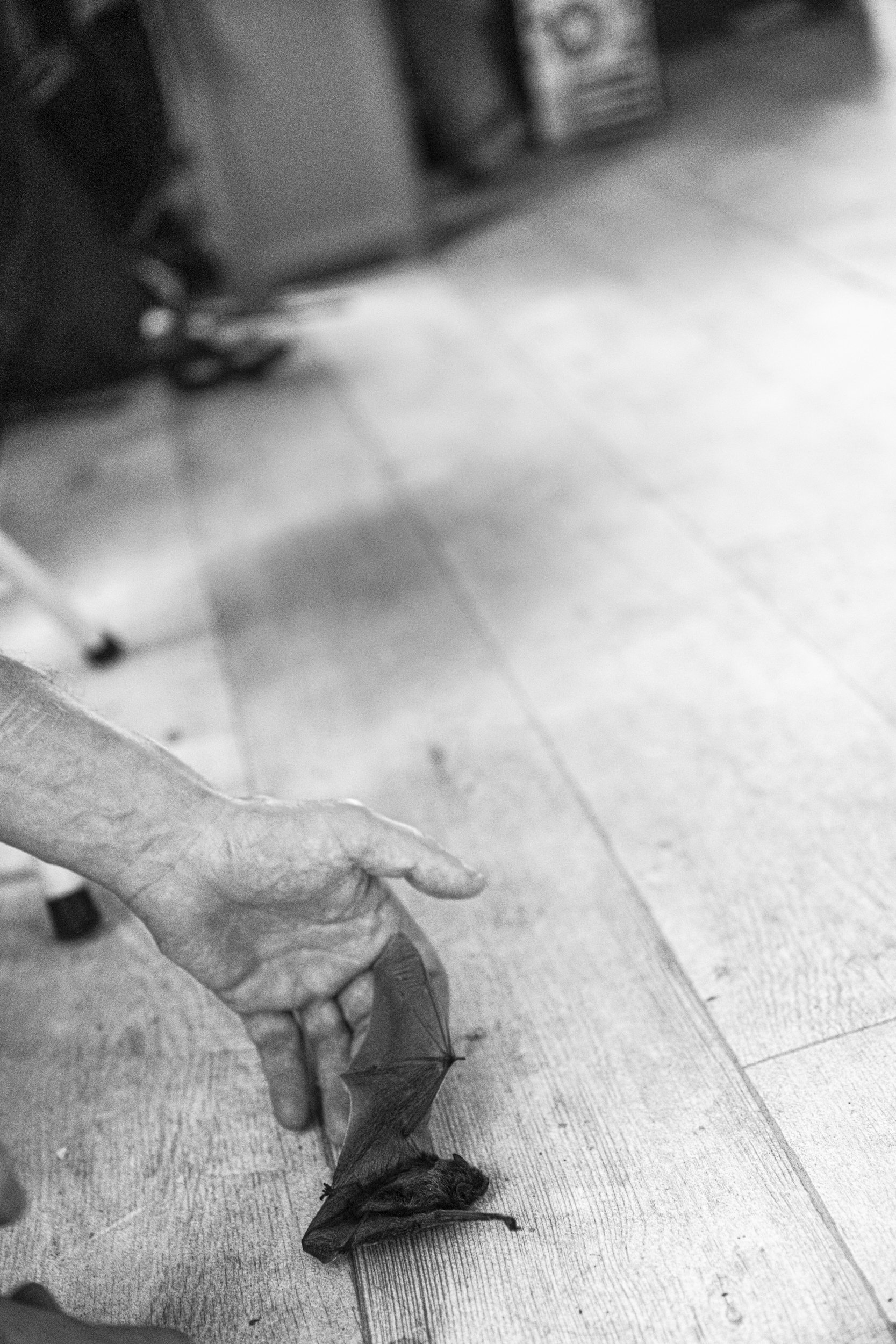How to save wildlife ?
I have often thought of publishing this little report here. Because this like all my other subjects moves me. But it has a "cute" dimension with which I find it hard to compromise with. So I post it because I think this subject is important, no matter how small or local it is or even cute the photographs might look. It’s a hard reality and it’s not as cute as it might look like.
I have always worked locally, in Belgium, in Brussels, or in the village where I am lucky enough to live. I have been on commission and on projects on the other side of the world, but sometimes what is at my feet matters to me as much. That's what happened to me a few months ago when I was leaving my house a few dozen meters away and saw a hedgehog dying along the road.
I had just contacted Xavier and Alan to do portraits of their birds (they own a lot of beautiful birds and owls, in a huge garden), and they had just opened a revalidation center for wild (local) animals “La grange sauvage”, the “Creaves” of Perwez. Those that have been struck by human life, or simply by nature, but 90% of the animals got there because of anthropogenic causes. I also wanted to work on the local fauna and flore after having worked on an investigation of De Standaard about the use of our gardens in Flanders
I decided to go and take some pictures in this war infirmary that has welcomed more than 1000 animals in only a few months, including hundreds of hedgehogs smashed by our automatic mowers, and all wildlife being hit or kill by electric lines, trains, chimneys, chemicals and weed killers, the windows of our houses, choc with cars and tractors, poaching, being lost and hit due to a construction site on their living area…
Our local Wallonia district are talking about making and taking decisions, but hardly support such centers. At most a few thousands euros and a few cents per animal taken in the barn but nothing for the venison nor for the dead animals for which everything has been tried. Xavier and Alan built the barn with the sweat of their brow, with some friends. They are now supported by random donations of few citizens and a team of volunteers. It’s almost nothing regarding all the help all these centers do provide to our nature.
While I brought them their first resident, two others arrived the next day, followed by many magpies, a crow hit by a car, a dying fox, an intoxicated bird of prey (the death to the rat given to the rat that dies and remains as a prey on the ground is tasty for the bird of prey. The toxin of the poison is therefore transmitted), a doe also hit by a car, a pigeon stuck in a chimney and on and on… and still counting.
It is relatively warm in this small center because it is necessary to warm and give water to these hypothermic and often dehydrated animals. The place smells a bit, and often upstairs I see humans feeding each animal with care and much attention, checking vitals signals, and food diet. Each time I come to photograph at the center the phone rings, a veterinarian for a follow-up, a person for an animal to be brought in urgently. It almost never stops.
Here a case due to the global pandemic. Due to the confinement, the space became quieter, everything was at a standstill. Nature took over after being careful and not being worried by humans. Owls established a nest on top of a roller coaster. A few months later, the nest had fallen, because the park had reopened and had suddenly disturbed all the animals that lived in this place forbidden to the public. I had the chance to see the two dismayed park workers bring the two baby Great Horned Owls to the Creaves center.
Great horned owls are not an easy species to manage. Like all other species, they need to be fed daily, interfering as little as possible to preserve their survival instinct and paying attention to their talons and keep them safe from the other animals into a big aviary. Then you have to foresee the moment when they will be big enough to be released, which will be done a few months later.
Here they are again a few months later, having almost acquired an adult size, they will be released together in an open and preserved place.
In addition to all these daily tasks, a strict administration and applicable to each species that entered the center. It is entered in a computer program, with a date of arrival, a cause of shock, a treatment and a day of release in the wild if it is the case. Many times, birds attacked by domestic animals die of cardiac arrest during transport or a few hours after the altercation.
It is very striking to see a real wild cat (wounded in the paw and treated) looking at us with so much fear and terror in the eyes. I think sometimes that all the animals have passed the word saying "we avoid humans, it only causes us problems". So birds scream to get out of their revalidation cages or to get fed, and other mammals recover under a heat lamp with a disconcerting fragility and tenderness.
All living beings are regulators on the planet, and regulate themselves. For example the unloved magpie plays a very important sanitary role since it is a scavenger and contributes to clean the soil of organic waste. In the garden, it helps to eliminate many insects and slugs.
At the wild barn, they are constantly nursing. One evening a deer hit by a car is left to die on the side of a busy road. He was found with an open fracture and a necrosis of the leg, while the volunteers went to look for him a veterinarian immediately proceeded to an amputation, they could not do anything better. But they saved his life
If you wish to help the care center you can do so by visiting their website (in French) and making a donation.
I hope that the article has been interesting for you, I will continue my work on the revalidation center. I also remind you of the current exhibition of Allfather at the Fragma gallery, as well as the link to my Eshop if you want to order a book or a print.
Thank you,
Sébastien



